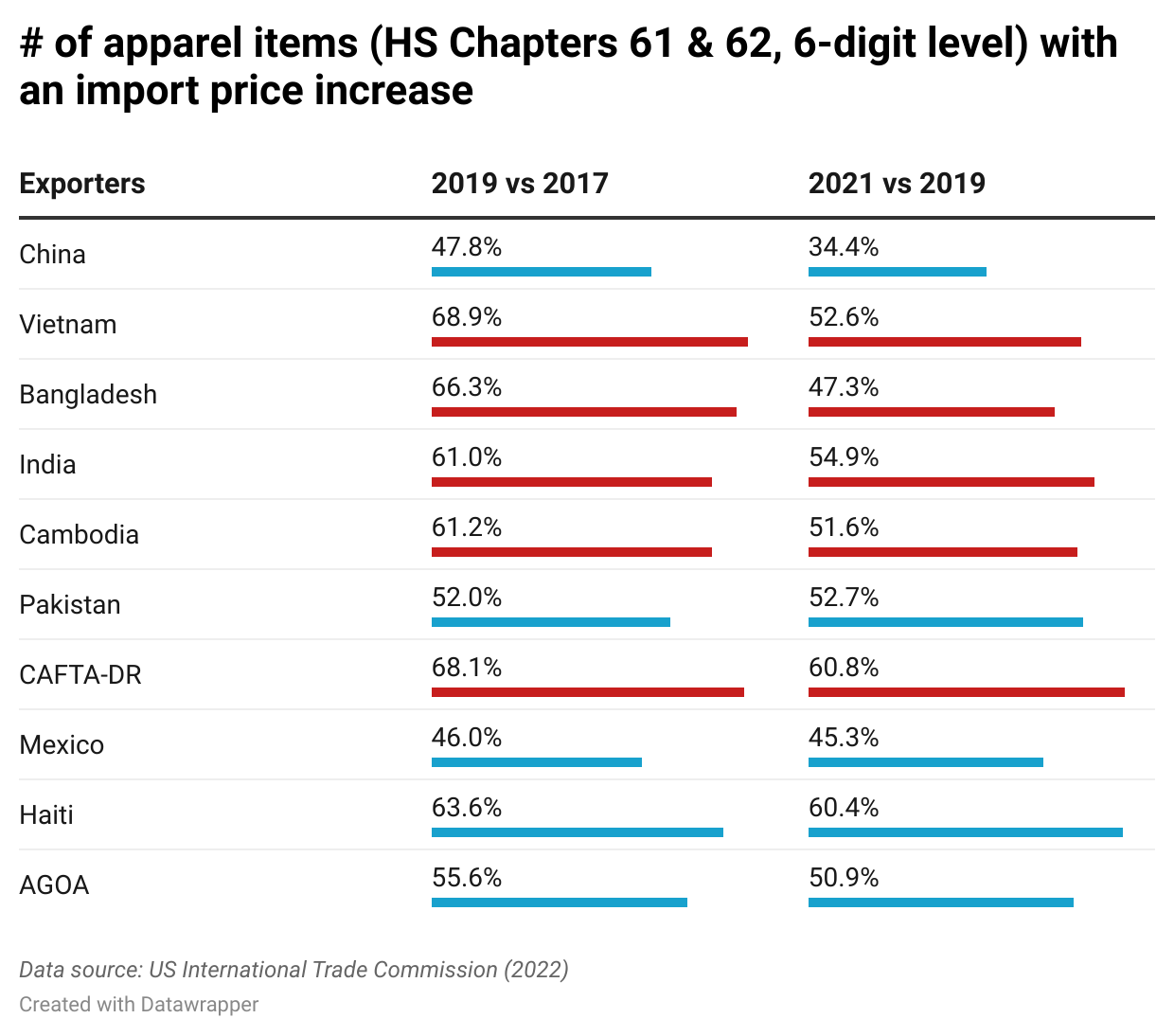Mitigating US Tariff Impact: Opportunities For Expanded Canada-Mexico Trade

Table of Contents
Strengthening the USMCA (United States-Mexico-Canada Agreement):
The USMCA provides a strong foundation for increased Canada-Mexico trade. By fully leveraging its provisions and exploring avenues for bilateral enhancement, both countries can reduce their dependence on the US market and create a more resilient trading environment.
Leveraging USMCA Provisions:
The USMCA offers several mechanisms to reduce reliance on US markets. Effectively utilizing these tools is key to mitigating the impact of US tariffs.
-
Increased regional value content (RVC): Focusing on increasing the RVC in manufactured goods allows businesses to qualify for preferential tariff treatment under the USMCA, reducing the overall cost of trade between Canada and Mexico. This requires strategic sourcing and production adjustments to maximize the percentage of North American components.
-
Streamlining customs procedures and reducing border delays: Efficient customs processes are crucial for smooth trade flows. Collaborating to improve border infrastructure and technology will reduce delays, lower costs, and enhance the overall competitiveness of Canada-Mexico trade.
-
Focusing on sectors where the USMCA offers competitive advantages: Identifying sectors where the USMCA provides preferential access to both Canadian and Mexican markets allows for strategic investment and growth, minimizing vulnerability to US tariff fluctuations. Industries like automotive, agriculture, and energy represent key opportunities.
-
Utilizing dispute resolution mechanisms within the agreement: The USMCA includes robust dispute resolution mechanisms. Effectively utilizing these processes can help address trade barriers and ensure a fair trading environment, protecting Canadian and Mexican businesses from unfair trade practices.
Promoting Bilateral Trade Agreements:
While the USMCA is a crucial component, exploring separate or enhanced bilateral trade deals beyond the USMCA can further diversify markets and reduce vulnerability to US tariff changes.
-
Exploring preferential trade agreements with other countries: Diversifying export markets by pursuing bilateral agreements with other nations reduces dependence on any single market, including the US. This provides greater flexibility and resilience against external trade policy shifts.
-
Facilitating cross-border investment and joint ventures between Canadian and Mexican businesses: Encouraging direct investment and joint ventures fosters deeper economic integration, creating more resilient supply chains and fostering innovation. This collaborative approach strengthens the overall Canada-Mexico economic relationship.
Boosting Cross-Border Supply Chains:
Reducing reliance on US-based suppliers is critical for mitigating tariff impacts. Diversifying supply chains and strengthening regional manufacturing are key strategies.
Diversifying Supply Chains:
A diversified supply chain offers resilience against external shocks. This requires a proactive approach to sourcing and logistics.
-
Identifying and developing alternative sources of raw materials and intermediate goods within Canada and Mexico: Investing in domestic sourcing reduces vulnerability to US tariff increases and promotes greater regional self-sufficiency.
-
Investing in infrastructure to support efficient cross-border logistics: Improved infrastructure, such as modernized border crossings and efficient transportation networks, ensures the smooth and cost-effective flow of goods between Canada and Mexico.
-
Promoting the development of regional clusters and industry networks: Building regional industrial clusters fosters collaboration, innovation, and specialization, strengthening the overall competitiveness of Canada-Mexico supply chains.
Strengthening Regional Manufacturing and Production:
Integrating Canadian and Mexican industries creates a powerful economic bloc.
-
Increased competitiveness in global markets: A combined Canada-Mexico manufacturing base offers greater scale and efficiency, improving competitiveness in global markets.
-
Reduced transportation costs and lead times: Regional production reduces transportation distances and times, lowering costs and improving supply chain reliability.
-
Creation of new jobs and economic opportunities: Increased manufacturing and trade create new job opportunities and stimulate economic growth in both countries.
Investing in Infrastructure and Logistics:
Efficient infrastructure is the backbone of successful trade. Modernizing border crossings and improving transportation networks are crucial.
Modernizing Border Crossings:
Streamlining border procedures is vital for efficient trade flows.
-
Improving road, rail, and port infrastructure: Investment in modern infrastructure reduces bottlenecks and delays, ensuring the smooth flow of goods.
-
Implementing advanced technology to accelerate customs processing: Adopting technologies like pre-clearance programs and automated customs systems significantly reduces processing times.
-
Strengthening collaboration between Canadian and Mexican border agencies: Close collaboration enhances efficiency and streamlines cross-border procedures.
Improving Transportation Networks:
Efficient transportation networks are essential for cost-effective trade.
-
Reduced transportation costs and improved supply chain reliability: Investing in efficient transportation networks, including multimodal systems, reduces costs and improves reliability.
-
Investment in multimodal transportation systems: Utilizing a combination of road, rail, and maritime transport optimizes logistics and reduces costs.
-
The role of digital technologies in improving supply chain visibility and efficiency: Digital technologies, such as tracking systems and data analytics, improve supply chain visibility and efficiency.
Conclusion:
The impact of US tariffs underscores the critical need for Canada and Mexico to strengthen their bilateral trade relationship. By strategically leveraging the USMCA, diversifying supply chains, and investing in infrastructure, both nations can significantly mitigate the negative effects of external trade policies. Expanding Canada-Mexico trade is not just a response to current challenges, but a proactive step towards building a more resilient and prosperous future for both countries. Explore the opportunities for strengthening Canada-Mexico trade further and build a more robust economic partnership.

Featured Posts
-
 Paris Roubaix 2025 Innovative Gravel Bike Technology And Tyre Solutions Showcased
May 26, 2025
Paris Roubaix 2025 Innovative Gravel Bike Technology And Tyre Solutions Showcased
May 26, 2025 -
 What Is A Flash Flood Emergency And How To Stay Safe
May 26, 2025
What Is A Flash Flood Emergency And How To Stay Safe
May 26, 2025 -
 Myrtle Beach Newspapers Sweep 59 Sc Press Association Awards For Local News
May 26, 2025
Myrtle Beach Newspapers Sweep 59 Sc Press Association Awards For Local News
May 26, 2025 -
 Hsv Rueckkehr In Die Bundesliga Sieben Jahre Kampf Ein Grosser Triumph
May 26, 2025
Hsv Rueckkehr In Die Bundesliga Sieben Jahre Kampf Ein Grosser Triumph
May 26, 2025 -
 New York Rangers The Domino Effect Begins
May 26, 2025
New York Rangers The Domino Effect Begins
May 26, 2025
